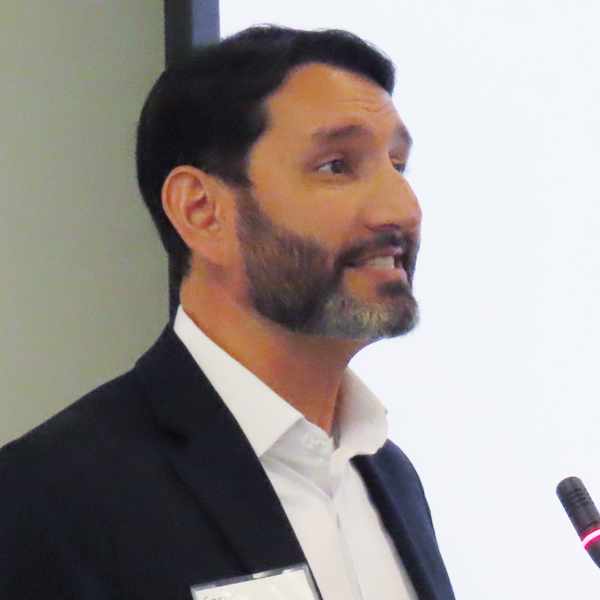MISO Independent Market Monitor David Patton has been calling for a sloped demand curve in the RTO’s capacity market for what seems like forever.
The Potomac Economics president includes it as a recommendation in his annual State of the Market report for MISO every year; he even asked FERC to order the RTO to implement it in 2018. Nevertheless, MISO still has a vertical curve.
This year is a bit different, however. MISO is facing a 1.2-GW capacity shortfall in its Midwest region, and it is driven in part by inefficiently low prices “contributing to a sustained trend of retirements of resources that would have been economic to remain in operation,” according to this year’s report, presented by Patton to the MISO Board of Directors’ Markets Committee on Wednesday.
MISO’s current demand “curve” — a straight vertical line at the minimum capacity requirement — represents the fact that the RTO does not pay extra for surplus capacity, only increasing prices when there is a deficiency in a zone.
“The implication of a vertical demand curve is that the last megawatt of capacity needed to satisfy the minimum requirement has a value equal to the deficiency price, while the first megawatt of surplus has no value,” the report says. “Since prices will be set where the supply offers intersect with the demand curve, a vertical demand curve will almost always set the price close to zero when the market has even a small surplus of capacity.”
Or, as Patton told the committee, “When we impose a vertical demand curve, we’re basically saying, ‘We see no reliability value for any megawatts above the minimum requirement.’ That’s obviously not true.”
The clearing price for seven of MISO’s 10 capacity zones in the 2022/23 Planning Resource Auction (PRA) in April was the cost of new entry (CONE) of $236.66/MW-day, while the other three zones, in MISO South, cleared at $2.88. (See MISO’s 2022/23 Capacity Auction Lays Bare Shortfalls in Midwest.) That marked a huge spike from the prices in the previous auction, which ranged from 1 cent in MISO South to $5 in the rest of the footprint. (See MISO Capacity Auction Values South Capacity at a Penny.) The jump signals an urgent need for additional capacity, especially in the northern zones.
With Patton’s sloped, or “reliability-based,” curve, prices are capped until the minimum requirement is fulfilled, and each subsequent megawatt is priced at a diminishing rate. Had it been used in the 2021/22 auction, prices would have ranged from $13 in MISO South to $150 in MISO Midwest. “Although this remains well below the cost of new entry of roughly $250/MW-day, this price would ensure existing resources that were needed to maintain reliability would remain in operation,” the report says.
MISO Response
Patton’s presentation on the curve received favorable responses from MISO officials and directors.
“I really think this is what we need to do,” CEO John Bear said. He argued, however, that generator retirements are not being driven by economics but by environmental policies. “So even if we fix this, we may have some troubles.”
Patton agreed that a different curve would not “magically solve the problem overnight.” But he countered that retirements purely for environmental reasons are rare.
“Sometimes there is an interplay because there can be an environmental requirement that comes out that requires a resource owner to spend money to comply … and that would be embedded in the going-forward costs,” he said. “That may be one of the reasons why the going-forward cost is as high as it is.
“But when a market doesn’t provide the revenues to cover those sorts of costs, then the unit retires, and it may look like an environmental retirement, but had we provided the revenue, some of these units would not have retired.”
Patton also said that “this isn’t entirely a MISO issue. I view this as also being a FERC issue. I don’t know how FERC looks at the actual prices there and finds them to be just and reasonable, because they don’t serve the basic purpose of why you have a capacity market in the first place.”
Director H.B. “Trip” Doggett, chair of the committee, noted that he has “asked MISO to attempt to arrange some training for us later this year … and one of [the] topics would be the sloped demand curve so that we can fully understand it.”
Short vs. Long Term
The report says that as long as the footprint does not experience above-normal heat this summer — a big “if” given the high temperatures already this month — MISO’s resources should be adequate. Though retiring units did not offer into the auction, they will still be operational for at least this summer, and the RTO is able to import power into practically any region of its footprint. And despite the shortfall in the auction, it saw a 200-MW net increase in capacity last year, with a 1-GW gas-fired plant coming online in MISO South and nearly 2 GW of wind resources across the footprint.
“In the long term, however, we are very concerned about MISO’s resource adequacy given the relatively low net revenues generated by MISO’s capacity market,” the report says.
